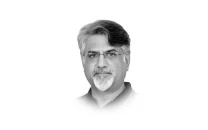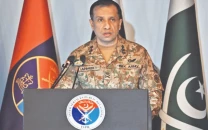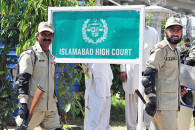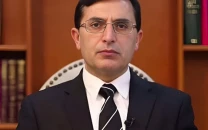Anatomy of Strategic Mutual Defence Agreement
Changing global environment, progression of Pak-Saudi relations, regional security needs make pact natural development

The defence pact between Pakistan and Saudi Arabia must be seen in the larger historical, geopolitical and diplomatic context. Broadly, there are three main angles through which this agreement can be understood: the natural progression of Pakistan-Saudi relations; the changing global environment; and the demands of regional security in the Middle East. Taken together, these three perspectives show that this pact was a natural development rather than an abrupt shift.
The first angle is historical. Pakistan began signing defence agreements with Saudi Arabia as early as the 1950s. With every passing decade, these agreements grew deeper as the two countries adapted to the strategic environment of the time. During the Cold War, defence cooperation was designed to meet the realities of a bipolar order. Later, with the collapse of the Soviet Union and the emergence of a unipolar world dominated by the United States, Pakistan-Saudi ties were once again adjusted to align with the new global system. In diplomacy, stagnation is death; and in this case, the steady flow of defence cooperation pointed naturally towards a more comprehensive pact. The agreement signed recently is thus a continuation of this historical trajectory, opening a new chapter in Pakistan-Saudi relations.
The second angle is connected to the structural transformation of the global system. The world is moving rapidly towards multipolarity. As Samuel P Huntington argued in his Clash of Civilizations, multiple poles of power were likely to form in the post-Cold War era. Already, three major poles - American, Chinese and Russian - are clearly visible, with other centres of influence gradually consolidating. At the same time, expansionist ideologies such as "Greater India" and "Greater Israel" reflect the volatility of this transition. Today, the international system is witnessing the most active conflict zones, refugee flows, and flashpoints since the Second World War. In this turbulent environment, states are turning towards neorealist strategies such as alliances, balancing behaviour and security-driven cooperation. The Pakistan-Saudi pact fits precisely into this pattern. It is an adaptive mechanism in a rapidly changing multipolar world where hard power, rather than liberal institutionalism, increasingly defines state behaviour.
The third angle lies at the regional level. After World War I, the Middle East, once united by cultural and religious bonds, was fragmented by the Sykes-Picot Agreement, which carved out artificial borders and created disunity. During the neoliberal order, Europe moved from centuries of rivalry to form the European Union, while the Middle East saw deeper fragmentation. Now, as the neoliberal order erodes, new forces are reshaping the region. In Europe, nationalism is resurging, with country-first politics gaining popularity in the UK, France, and elsewhere. By contrast, in the Middle East, the realities of insecurity and instability are encouraging cooperation. States are beginning to recognise, in Barry Buzan's words, the dynamics of a regional security complex, where the security of one state is deeply intertwined with that of the region. This pact between Pakistan and Saudi Arabia represents precisely this recognition: that cooperation is essential for regional stability, and that collective strength can counterbalance external pressures and hegemonic designs in the region.
Seen through these three dimensions, the Pakistan-Saudi pact was both natural and necessary. Pakistan, with its legacy of military diplomacy and its history of contributing to peace and stability, has extended its influence beyond South Asia into the Middle East through its brotherly partnership with Saudi Arabia. For Saudi Arabia, Pakistan offers operational experience, manpower and strategic depth, while Saudi Arabia brings economic and diplomatic clout. Both countries complement each other, strengthening areas where one may be relatively weaker. This is not just an alliance of convenience but a partnership rooted in shared interests and long-term strategic needs.
In conclusion, the Pakistan-Saudi defence pact is not a sudden development but the outcome of three interlinked processes: the historical trajectory of bilateral defence cooperation; the global shift towards multipolarity and neorealism; and the regional imperatives of collective security in the Middle East. As the international system continues to evolve, Pakistan and Saudi Arabia have chosen not to stand still but to adapt proactively. As Arnold Toynbee once said, "Civilizations die from suicide, not by murder." The Muslim world today faces a choice, remain fragmented and vulnerable, or move towards greater unity. This pact suggests that Pakistan and Saudi Arabia are choosing the latter, paving the way for stability and peace in a world where turbulence has become the new normal.















COMMENTS (5)
Comments are moderated and generally will be posted if they are on-topic and not abusive.
For more information, please see our Comments FAQ